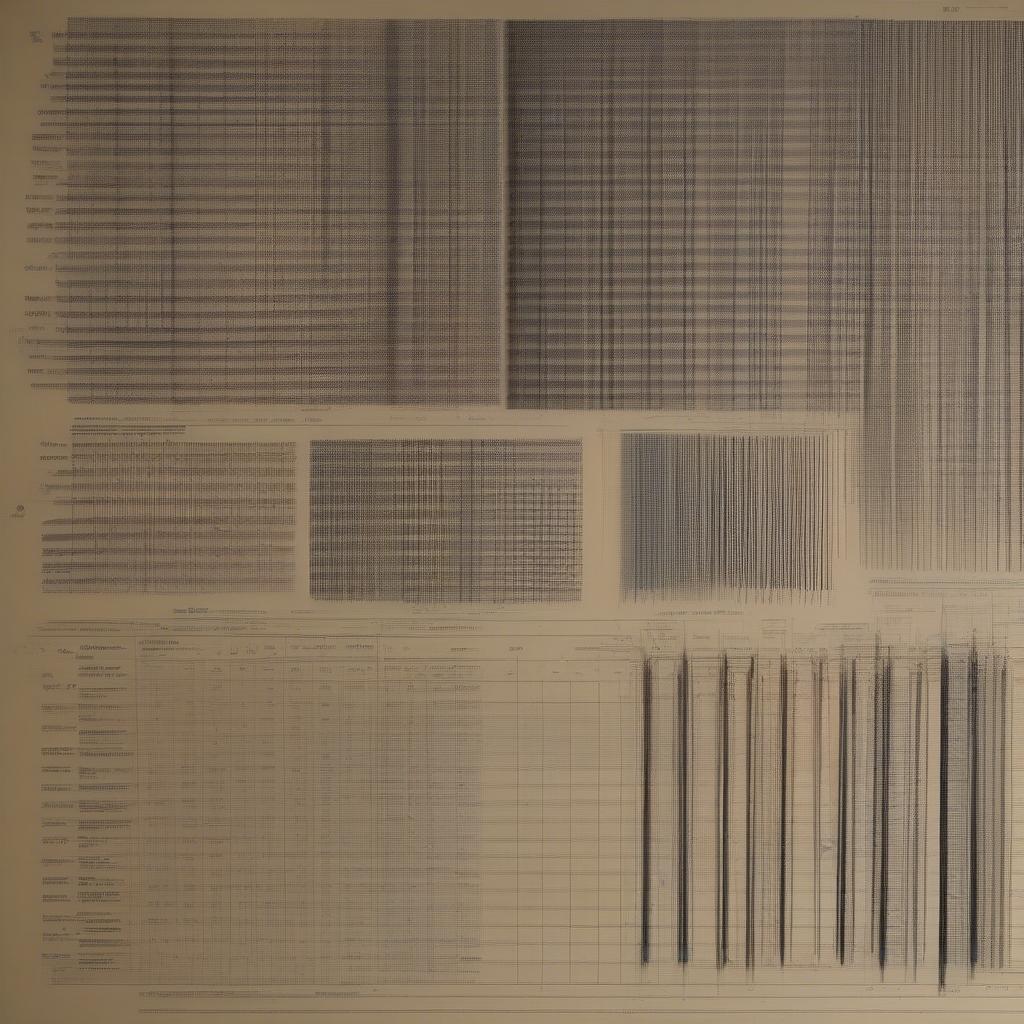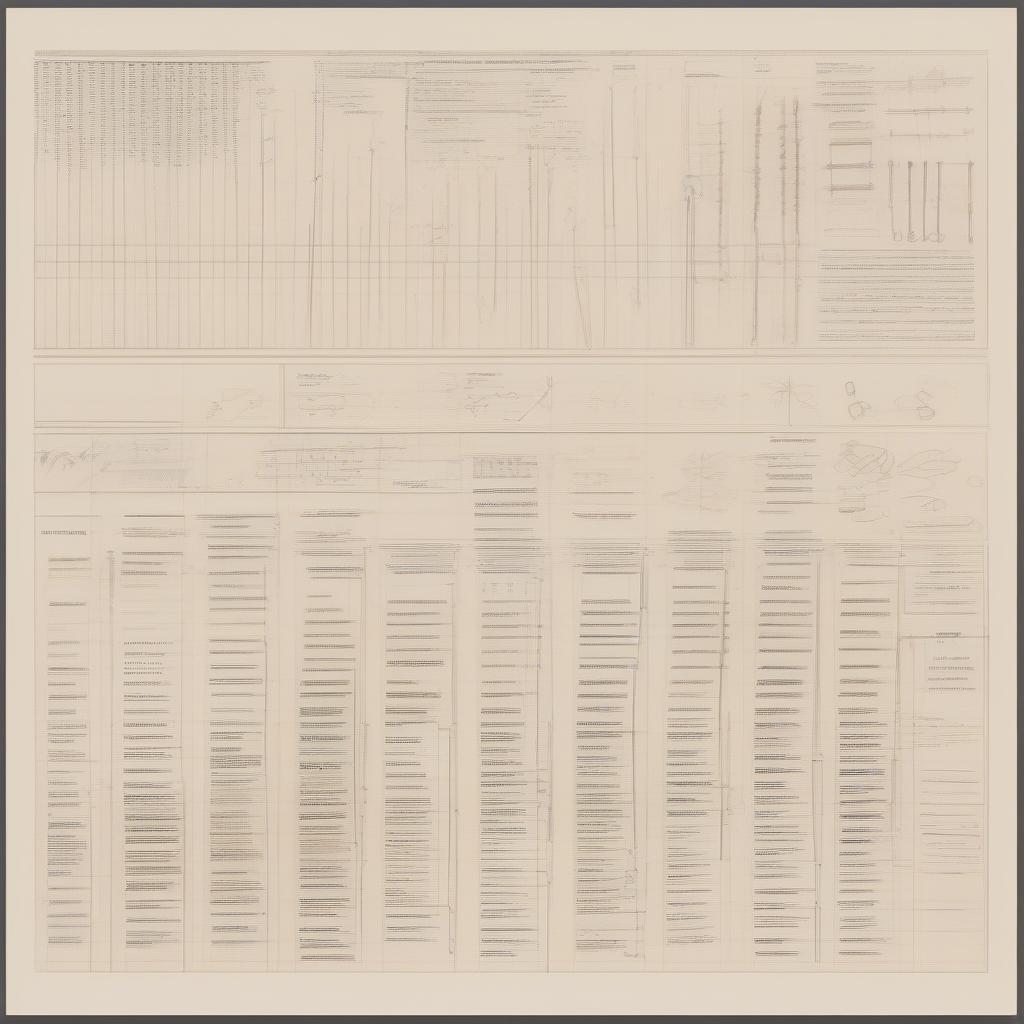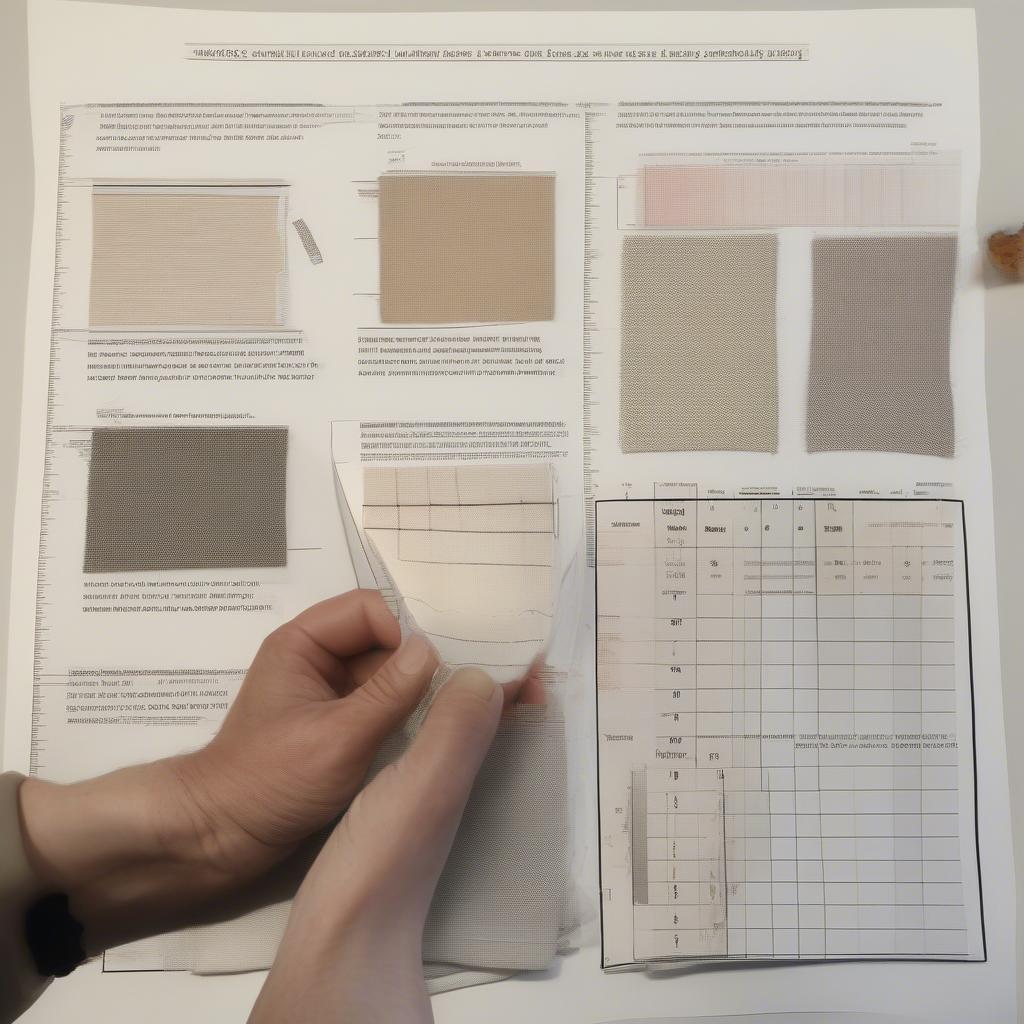Weave Table
Weave Identification Table: A Comprehensive Guide
A Weave Identification Table is an invaluable resource for anyone working with woven materials, whether you’re a seasoned crafter or just starting your weaving journey. It helps decipher the intricate patterns and structures of different weaves, enabling you to appreciate the artistry and skill involved in their creation. This guide explores the importance of weave identification, dives into the nuances of creating and using a weave identification table, and provides practical examples to enhance your understanding.  Examples of Weave Identification Tables
Examples of Weave Identification Tables
Understanding Weave Structures
Weaving, one of the oldest forms of textile art, involves interlacing two sets of yarns—the warp and the weft—to create fabric. The way these yarns interlace determines the weave structure, which significantly impacts the fabric’s appearance, drape, durability, and texture. Understanding these structures is crucial for anyone interested in textiles, from fashion designers to archaeologists. A well-structured weave identification table can be a powerful tool for this understanding.
From the basic plain weave to the more complex satin and twill weaves, each structure possesses unique characteristics. Plain weave, characterized by its simple over-and-under pattern, is known for its strength and stability. Twill weaves, with their diagonal lines, offer a softer drape and a more luxurious feel. Satin weaves, with their smooth, lustrous surface, are prized for their elegance.
Building a Weave Identification Table
Creating a weave identification table can be a rewarding project. First, determine the scope of your table. Will it focus on basic weaves or encompass a wider range of structures? Next, consider the key elements to include. Visual representations of the weaves, alongside their names and technical descriptions, are essential. You might also include information on the materials traditionally used for each weave, their typical applications, and any historical or cultural significance. A clear and organized layout is key for easy navigation.
 Creating a Weave Identification Chart
Creating a Weave Identification Chart
Key Elements of a Weave Identification Table
- Weave Name: Clearly label each weave with its accepted name (e.g., plain weave, twill weave, satin weave).
- Visual Representation: Include a clear diagram or photograph of the weave structure. This is crucial for visual learners.
- Technical Description: Provide a written description of the weave’s interlacement pattern, including details about the warp and weft yarns.
- Characteristics: Note the weave’s key properties, such as drape, durability, texture, and appearance.
- Applications: List common uses for the weave (e.g., clothing, upholstery, baskets).
Using a Weave Identification Table: Practical Examples
A weave identification table is invaluable for various purposes. For example, imagine you encounter a piece of antique fabric. By carefully examining its weave structure and consulting your table, you can identify the weave, which can offer insights into the fabric’s age, origin, and intended use. Similarly, if you’re a weaver planning a new project, how to set up a table loom for weaving a weave identification table can help you select the most appropriate weave structure based on the desired properties of the finished product.
“A well-crafted weave identification table is like a Rosetta Stone for textiles,” says renowned textile artist, Emily Carter. “It unlocks the secrets of these intricate structures, allowing us to appreciate the ingenuity and artistry behind them.” Another expert, John Davies, adds, “For weavers, a weave identification table is an indispensable tool for both design and analysis. It provides a framework for understanding the vast possibilities of woven structures.”
 Using a Weave Identification Table for Analysis
Using a Weave Identification Table for Analysis
Conclusion
A weave identification table is a powerful tool for anyone working with or appreciating woven materials. It provides a systematic way to identify and understand different weave structures, opening up a deeper appreciation for the artistry and technical skill involved in weaving. By learning to create and use a weave identification table, you can enhance your knowledge of textiles and gain valuable insights into the history, culture, and techniques of this ancient craft. Mastering the weave identification table will greatly enhance your understanding of this fascinating art form.
FAQ
-
What is the simplest type of weave? Plain weave.
-
What weave is known for its diagonal lines? Twill weave.
-
What characteristic makes satin weave so desirable? Its smooth, lustrous surface.
-
How can a weave identification table help archaeologists? It helps them analyze ancient textiles and understand their historical context.
-
What information should a weave identification table include? Weave name, visual representation, technical description, characteristics, and applications.
-
Why is a visual representation important in a weave identification table? It helps visual learners understand the structure more easily.
-
How can I use a weave identification table for my weaving projects? It can help you choose the right weave based on the desired properties of the finished product.
Need assistance? Contact our 24/7 customer support hotline: +84 388 951 999. Our offices are located in Hanoi, Vietnam and Tech Avenue, Suite 12, San Francisco, CA 94105, USA.
